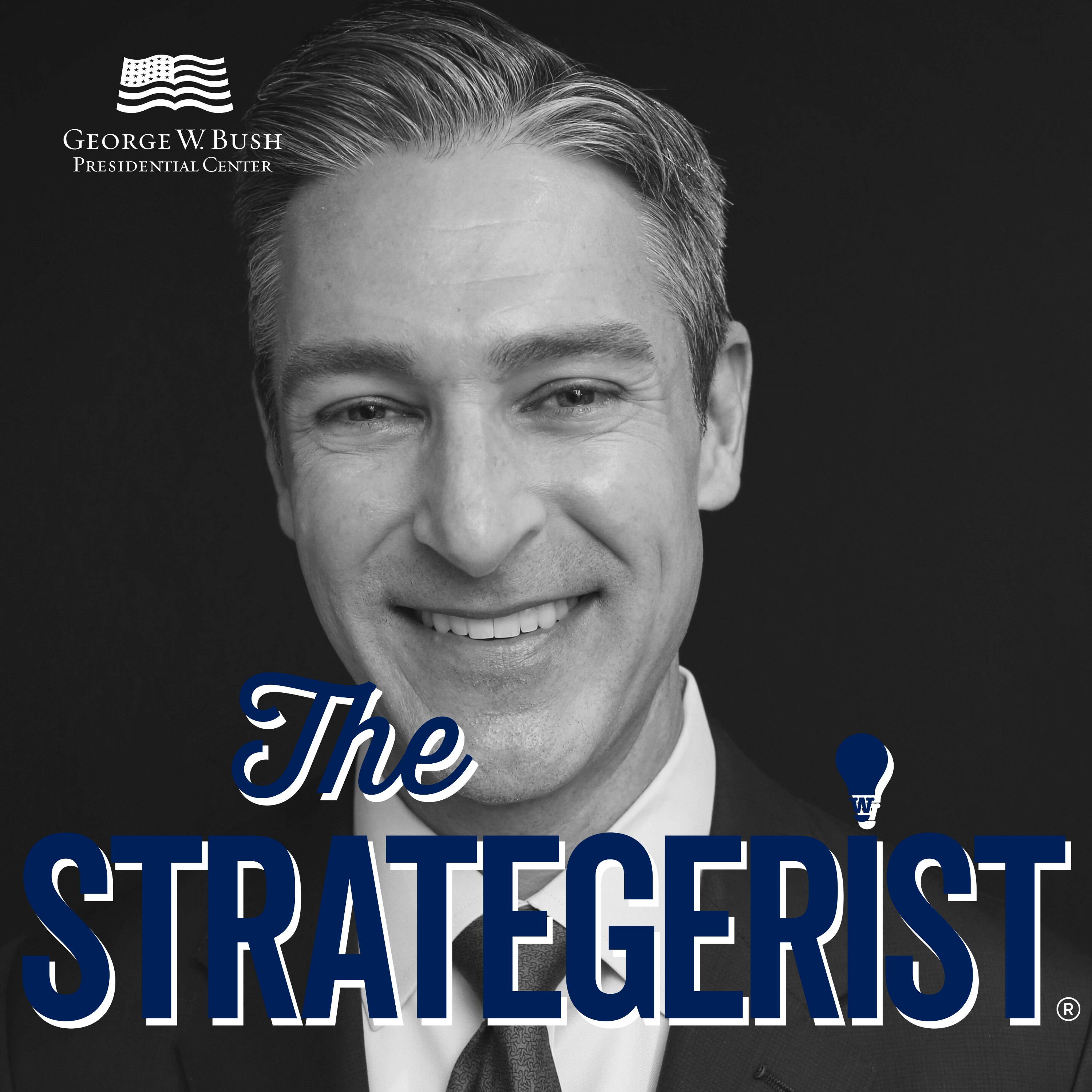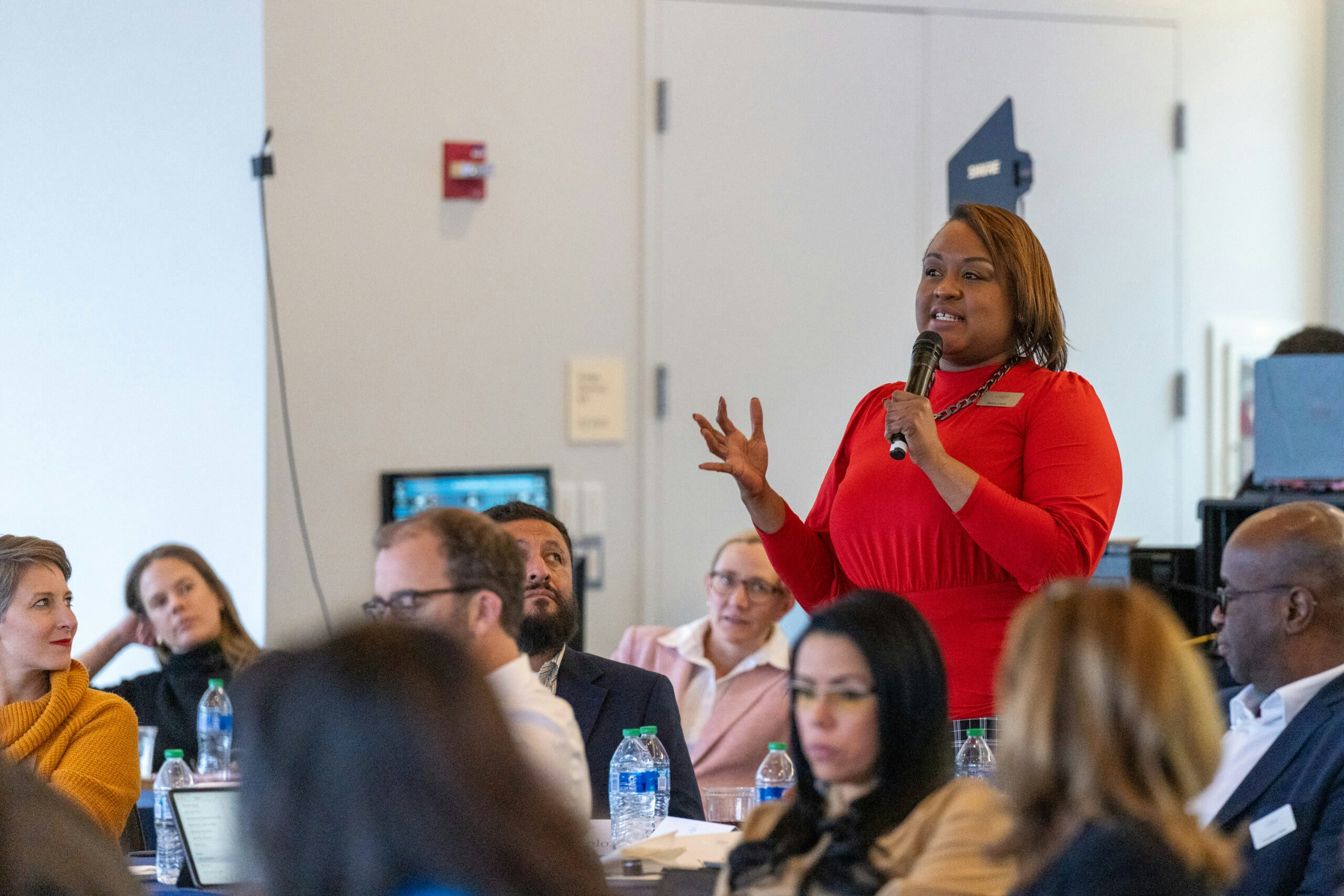Robert P. George is the McCormick Professor of Jurisprudence at Princeton University, where he directs the James Madison Program for American Ideals and Institutions. In this interview, he explains what he perceives as the true meaning of the Establishment Clause in the First Amendment’s protection of religious liberty.
Robert P. George is the McCormick Professor of Jurisprudence at Princeton University, where he directs the James Madison Program for American Ideals and Institutions. He also has served as former Chair of the United States Commission on International Religious Freedom and on the President’s Council on Bioethics under President George W. Bush. A graduate of Swarthmore College who also holds post-graduate degrees from Harvard and Oxford universities, Professor George has been appointed to the United States Civil Rights Commission and UNESCO’s World Commission on the Ethics of Science and Technology.
The West Virginia native discussed religious freedom’s value with Chris Walsh, Senior Program Manager in the Human Freedom Initiative at the George W. Bush Institute, and William McKenzie, Senior Editorial Advisor at the Bush Institute. He also explained what he perceives as the true meaning of the Establishment Clause in the First Amendment’s protection of religious liberty. And he discusses in the accompanying video the essential link between religious freedom and democratic stability.
How do you define religious freedom?
Religious freedom is the freedom to explore the great questions of human meaning and value, and to consider whether there is a more than merely human source of meaning and value. And religious freedom is the right to live one’s life in line with one’s best judgments regarding one’s obligations to the ultimate source or sources of meaning and value. Religious freedom protects not only belief, but the right to live authentically and with integrity in view of one’s beliefs.
This is why we refer not simply to “religious liberty” in the First Amendment to our Constitution, but to “the free exercise of religion.” It includes being free in both one’s private and one’s public life, to act on one’s best judgments about the most important questions, the great spiritual questions. The free exercise of religion includes the right to take one’s religiously informed moral judgments into the public square, where public policy matters are debated, and contend on terms of equality with one’s fellow citizens who may see things differently in deciding what our public policies will be on questions of justice, the common good, human dignity, and human rights.
You mentioned the Constitution. How do you interpret the Establishment Clause with its prohibition of the establishment of religion, but encouragement of religion in general?
The Establishment Clause has been profoundly misunderstood, including by the Supreme Court, since the Court first addressed the meaning of establishment and non-establishment in the 1947 case of Everson v. Ewing Township. In that case a unanimous court, although divided on the outcome of the case, curiously decided that the correct reading of the Establishment Clause was one in which government, both federal and state, was not only forbidden to favor any one religion over another but was forbidden to favor and foster religion generally.
The interpretation offered by Justice [Hugo] Black, who wrote the majority opinion in the case, and which was contested by none of the other justices, was that government was required under the Establishment Clause to be not only neutral as between different religious traditions and points of view, but neutral as between religion and non-religion. That was a profound misunderstanding for reasons that I’ll explain in a moment.
Later, when Justice [William] Rehnquist joined the court and some other personnel changes occurred, an alternative school of thought emerged sometimes called “non-preferentialism.” Non-preferentialists like Rehnquist argued that the Establishment Clause did not prohibit government from favoring religion generally or fostering the religious life of the people. It merely required that any support for religion given by government, state or federal, be even handed. The government could not prefer one sect or one religious denomination or tradition to any others.
So, if aid were to be given by a state to Lutheran schools, then aid had to be available from the state on the same terms to Jewish schools or to Catholic parochial schools or to Muslim schools, etc. That is a less egregiously bad interpretation of the Establishment Clause, and it captures an element of truth.
The Establishment Clause has been profoundly misunderstood, including by the Supreme Court, since the Court first addressed the meaning of establishment and non-establishment in the 1947 case of Everson v. Ewing Township.
But it’s not quite right. I think the Establishment Clause means what it says: “Congress shall make no law respecting an establishment of religion.” And what it says can easily be recovered if we consider that at the time of ratification of the First Amendment, and up until the 1830s, there were established churches in several of the states, depending on how precisely you define an establishment.
You had an establishment in perhaps even a majority of the states. In the 1830s, they were either disestablished or the establishments died out. That was understood to be perfectly consistent with the Constitution because the Establishment Clause says that Congress may not establish a national church or interfere with, compete with, or attempt to disestablish or to tax churches established by the individual states. That’s the historically correct understanding of the Establishment Clause.
One justice seems pretty clearly now to have seen that that’s so, and that’s Justice Clarence Thomas. Some newer justices on the Court — Justice [Neil] Gorsuch, Justice Amy Coney Barrett, Justice [Brett] Kavanaugh — haven’t yet opined on the subject. I’m not sure what Justice [Samuel] Alito’s opinion on it is. But we’ve had a lot of controversy about the Establishment Clause that simply misses the point because people fail to read the clause in its historical context.
Therefore, they can’t make sense of those two key words — respecting an. Congress shall make no law respecting an establishment of religion. It’s clear that the prohibition on the national government — on Congress — goes beyond merely the prohibition of establishing a national church.
If that was all the prohibition was meant to be, then the framers and ratifiers would’ve said, “Congress shall make no law establishing a church” or “Congress shall establish no church.” But it didn’t say that.
A simple thought experiment will enable you to see that the interpretation that I’m proposing is correct. Imagine that it’s, say, 1819 or 1823, and you are the solicitor general of a state that still has, as some did, state established churches. If the national government attempted to disestablish that church in your state, or somehow interfere with its affairs, you as solicitor general of your state would be called on to defend your state’s establishment.
Let’s say the case then goes all the way to the Supreme Court of the United States and you’re there standing in front of the justices and a justice asks, “What is the constitutional basis for your claim that Congress is, or the federal government is, unconstitutionally interfering with your establishment or attempting to disestablish your church?”
What you would say is, first of all, Congress has been given no delegated power to establish a church or to interfere with or disestablish churches in the states. And second, the First Amendment very clearly says, Congress shall make no law respecting an establishment of religion. And what is this law but a law respecting an establishment of religion, a law that is interfering with or touching upon our state religion?
Should the Constitution treat religion as something special? If so, why?
The Constitution does treat religion as something special in two places. One is the no religious tests clause, which is part of the original Constitution even before we had any amendments. And the second, of course, is in the First Amendment, which opens with the very first words: “Congress shall make no law respecting an establishment of religion or prohibiting the free exercise thereof.”
The mistake some people make is to suppose that, in these provisions, the Constitution’s framers and ratifiers are attempting to shield the state from religious influences or protect the state against religion. It’s quite the opposite of that.
These provisions protect the rights of religious folk of all faiths and shades of belief against predation by the national government, and in some cases by the states. They don’t want government interfering in, for example, the free exercise of people’s religion. The Constitution understands that religion is very precious, that it is how we attempt to understand the world and relate ourselves to the ultimate source or sources of meaning and value.
Being able to do that is critically important to our integrity as persons and to our flourishing as human beings. Therefore, we have to make sure that the state’s stands toward it are not hostile; that the state is not interfering with our rights to consider the deep existential questions, the question of meaning and value, and arrive at honest judgments about whether there are more than merely human sources or a more than merely human source of meaning and value; that the state is not interfering with our right to live with authenticity and integrity in view of our very best judgments.
So, yes, religion is treated in our Constitution as something special, something important, something needing to be protected because of its profound human value.
People often use the phrase, “separation of church and state,” but there’s not a consensus on what that phrase means. So, let me ask you, what does the phrase mean and how does it work?
“The separation of church and state” is a phrase that appears nowhere in the Constitution. We have heard of those words because they were written by Thomas Jefferson to a Danbury Baptist Church community in explaining our Constitution’s stance toward religion. He drew the metaphor of a “wall” of separation between church and state.
The truth in what Jefferson is saying is pretty straightforward. When understood correctly, it means that the institutions of the state and the institutions of the church are separate. Under our Constitution, no political figure holds office by virtue of an ecclesiastical appointment, and no ecclesiastical figure holds office in virtue of a political appointment.
The Constitution understands that religion is very precious, that it is how we attempt to understand the world and relate ourselves to the ultimate source or sources of meaning and value.
That was important because in England, the nation from whom we broke, there was an established church. The bishops of that church were ultimately appointed by the king and functionally appointed by political advisors to the king, like the prime minister. Even to this day, the formal appointment of bishops is by the monarch, but informally it’s done by the British Parliament and the prime minister.
We didn’t want that in the United States. Jefferson certainly didn’t. So, that is why he speaks of a “wall of separation” between church and state.
The institutions are separate. But there is not a separation of religion from public life or religion from politics. Nothing in the correct understanding of the concept of separation of church and state would condemn Martin Luther King, Jr., for example, for bringing his biblically informed moral witness and political judgment to bear on the great questions of justice and human rights of his time in our country.
By the same token, there is no offense against the separation of church and state properly understood for pro-life people today bringing a biblically informed or a spiritually informed set of judgments to bear in fighting for the principle of the profound inherent and equal dignity of each and every member of the human family, beginning with a child in the womb. There’s been a lot of misunderstanding here, but it’s easily cleared up if we look at the historical record and think it through.
This may be somewhat related to those misunderstandings, but how do you assess recent Supreme Court decisions on religious freedom?
They are certainly heading in the right direction. The Masterpiece Cakeshop case was correctly decided. The Fulton v. Philadelphia case was correctly decided. The important “ministerial exemption” cases that have been handed down in the past few years are correctly decided. The Court is finally getting its bearings on these cases.
Now, some of those decisions — in particular the Fulton and the Masterpiece Cakeshop cases — have been narrow. I would say too narrow. They leave some questions unresolved that need to be resolved and resolved in favor of a constitutionally sound conception of religious freedom. I’m confident that the court will move further toward accomplishing that goal in future cases, including some that are pending before the court.
The historical record of the court has not been good, beginning with the Everson decision in 1947, when the court went off track. Then, through the 1960s, the Warren Court stayed on that wrong track. When Republicans finally got some appointees under President Nixon, those appointees did not correct things. Now, you have justices on the court who are getting us back onto the right track.
Let me ask you a question that has less to do with legalities and acts of Congress. And that is, to what extent is the rapid rise of biotechnologies and their impact on fields like genetic adaptations, stem cell research, even reproductive technologies, having an impact on the cause of religious freedom?
The current impact has not been that great, but it’s the future that we need to worry about. Some people in the field of bioethics look forward to a day when we can even more accurately identify genetic disorders and diseases in the developing child. Some say it should be an offense, as a form of child abuse, to not abort a child with a genetic defect. Or some couples should be forbidden from having children because we know those children could be genetically inferior.
It’s important to remember that the eugenics movement did not begin with Nazi thugs. The eugenics movement was created by polite, genteel, highly educated, high status, progressive people. Many of them were academics and professional people who came to believe that we can and should build a better human: We can and should improve the gene pool.
Long before anybody had ever heard of the Nazis, a German legal scholar and a medical professional, Carl Binding and Alfred Hoche, wrote a book justifying the termination of “lives unworthy of life.” That’s where the phrase, lives unworthy of life, came from. The Nazis picked it up and ran with it, but they didn’t invent the idea that some people don’t deserve to live because of their genetic inferiority. Polite, well-educated, academic, and professional people, progressive people, came up with the idea.
Many of us look back with horror on eugenics, but it is making a comeback in the minds of some people. We will live to see it rise again.
So, we need to be prepared to resist and fight back. We need to stand for the profound, inherent, and equal dignity of each and every member of the human family, irrespective of race or sex or ethnicity but also and equally irrespective of age or size or stage of development or condition of dependency.
Our principle has to be that every member of the human family is equal in basic dignity to any other human being. None can be regarded as a “life unworthy of life.” None can be reduced to a status of an object or an instrument for experimentation, even in the embryonic or fetal or infant stages.
It’s good to recall the biblical teaching that the human being, though fashioned from the mere dust of the earth, is nevertheless made in the very image and likeness of the divine creator and ruler of all that is. The principle of imago dei, man being made in the image and likeness of God, is our historical and religious anchor for the inherent and equal dignity of each and every member of the human family.



























